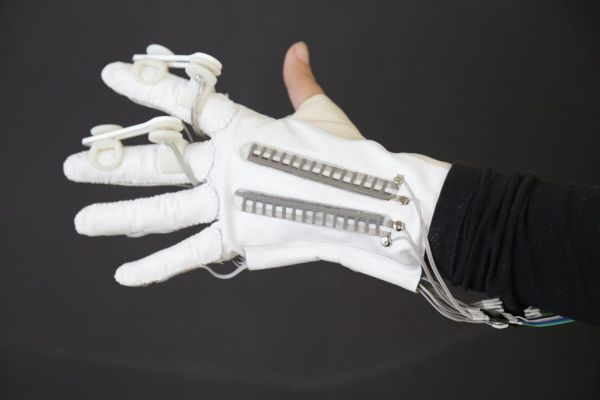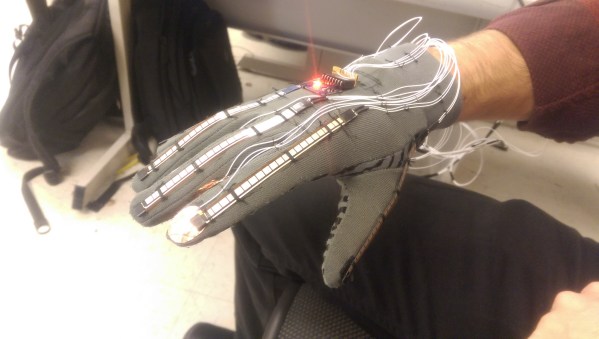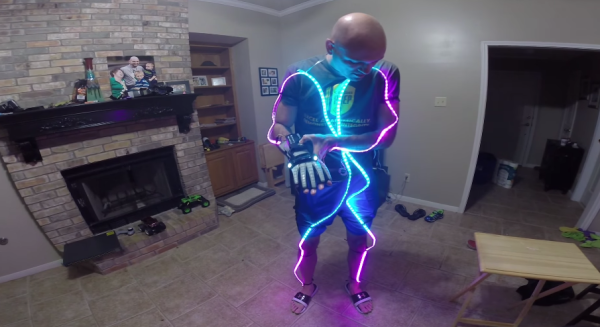California textiles artist and musician [push_reset] challenged herself to make a wearable, gesture-based synth without using flex-sensing resistors. In the end, she designed almost every bit of it from the ground up using conductive fabric, resistive paint, and 3-D printed parts.
A couple of fingers do double duty in this glove. Each of the four fingertips have a sensor made from polyurethane, conductive paint, and conductive fabric that is connected to wires using small rivets. These sensors trigger different samples on an Edison that are generated with Timbre.js. The index and middle fingers also have knuckle actuators made from 3-D printed pin-and-slot mechanisms that turn trimmer pots. Bending one knuckle changes the delay timing while the other manipulates a triangle wave.
On the back of the glove are two sensors made from conductive fabric. Touching one up and down the length will alter the reverb. Sliding up and down the other alters the frequency of a sine wave. [push_reset] has kindly provided everything necessary to re-create this build from the glove pattern to the STL files for the knuckle actuators. Check out a short demonstration of the glove after the break. If you love a parade, here’s a wearable synth that emulates a marching band.


















